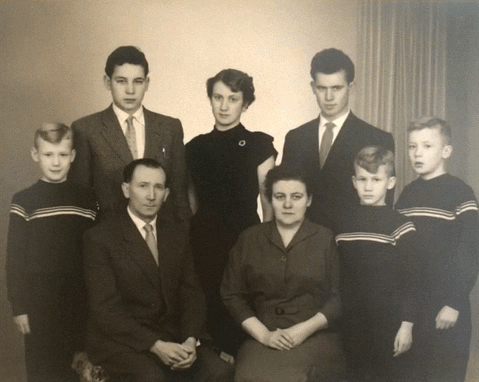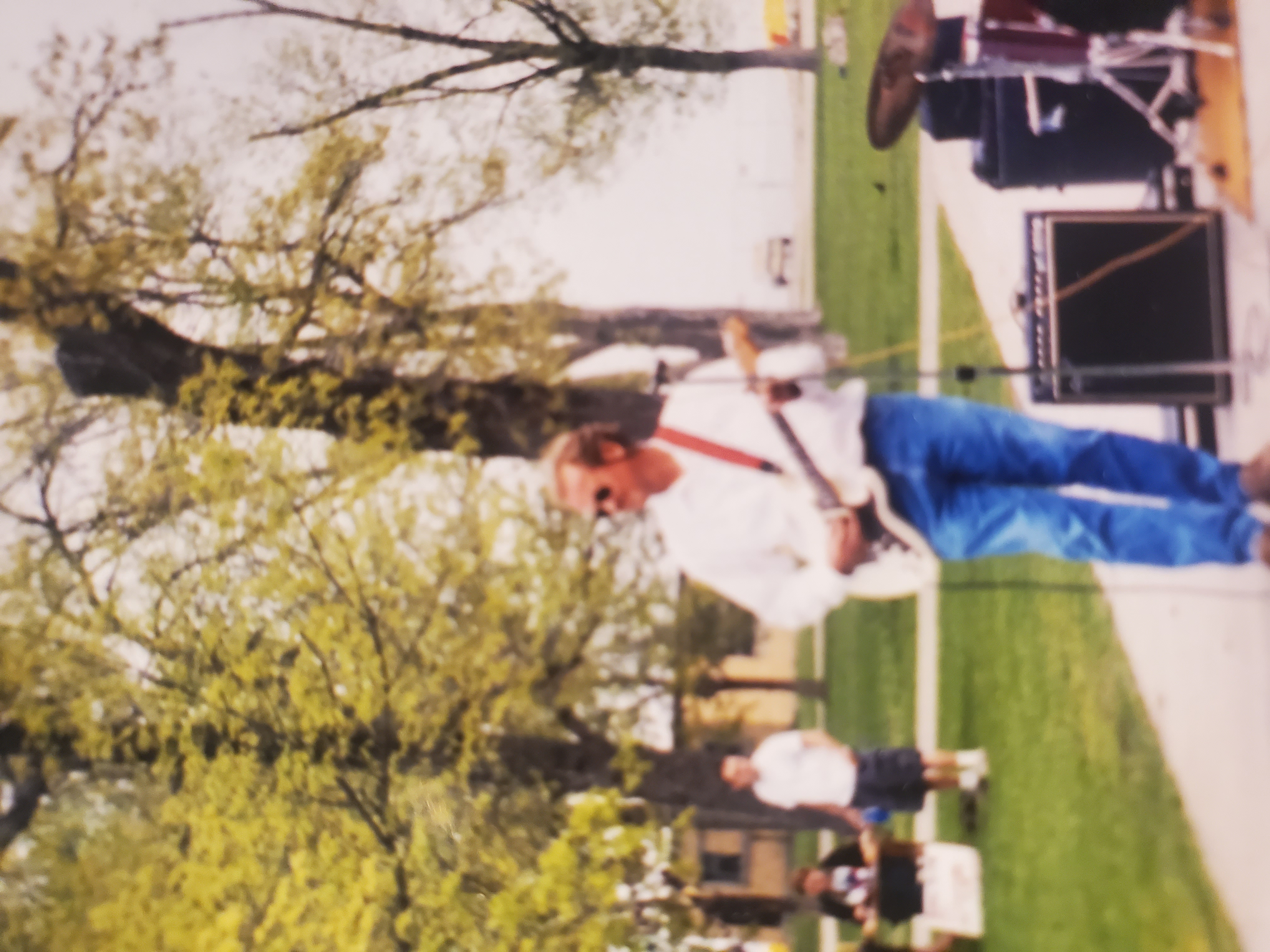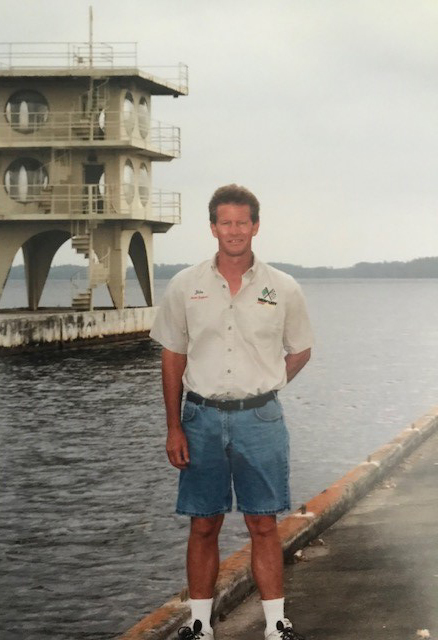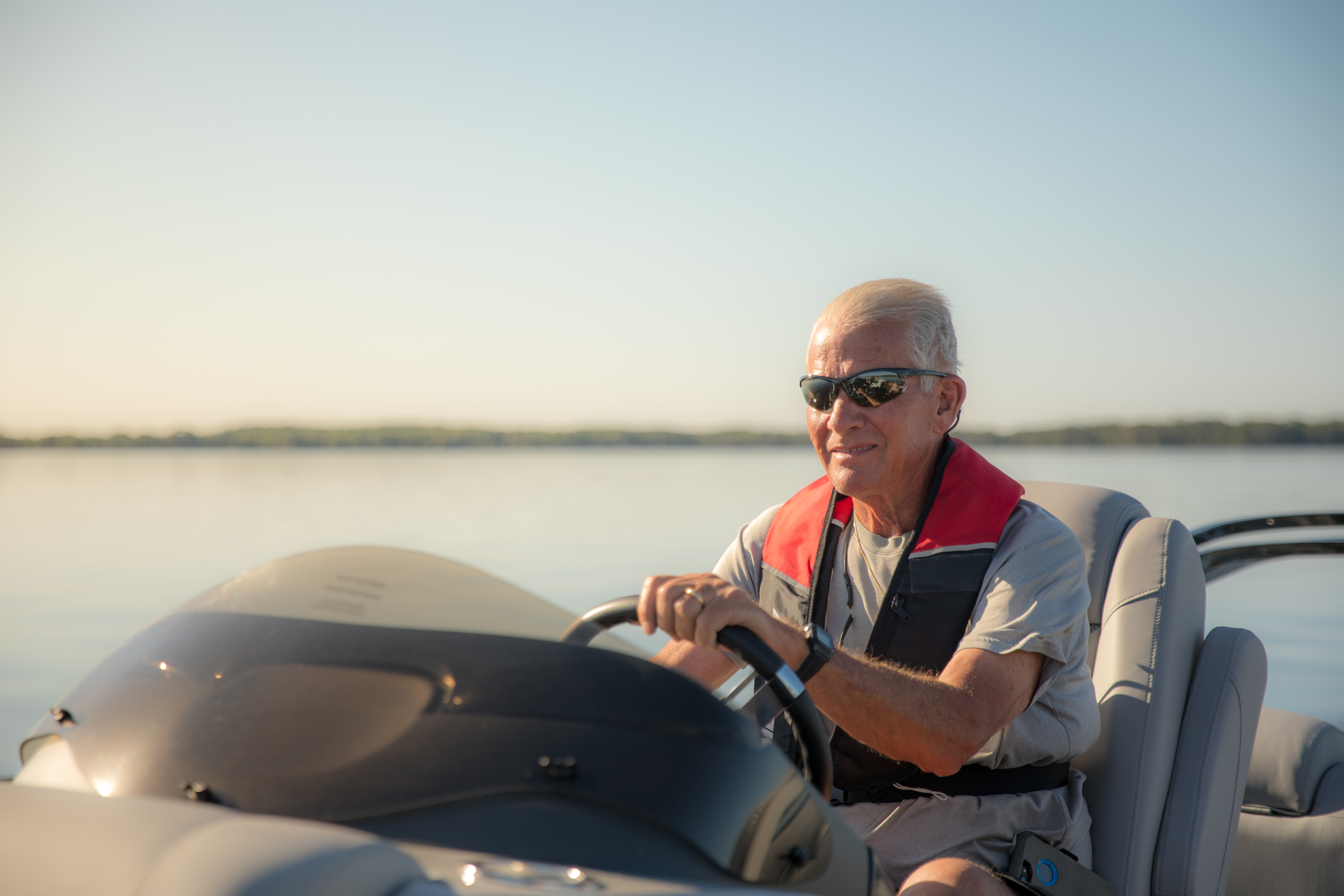During a 30-year period that ended about a decade ago, if you were to ask any engineering, marketing or executive employee at Mercury Marine to name the best boat driver in the company, the answer would most likely have been Jack or John Litjens.
Not to slight anyone else, but in any kind of boat, at any speed, no matter the mission, even in the world’s largest recreational marine propulsion company, you’d have been hard pressed to find anyone more trustworthy and skilled behind the wheel and more knowledgeable about the product than the Litjens brothers. And when either of them drove – whether for product validation, chauffeuring VIPs, boat show demo, media event or photo shoot – you knew immediately that you were watching a master at work. When they talked, you were bound to learn something.
Opportunity in America
 The Litjens brothers both retired from Mercury a few years back, but their legacy lives on in their many contributions to the brand and the entire marine industry. To fully appreciate their careers at Mercury, it helps to understand where they came from.
The Litjens brothers both retired from Mercury a few years back, but their legacy lives on in their many contributions to the brand and the entire marine industry. To fully appreciate their careers at Mercury, it helps to understand where they came from.
Their path to Mercury began in 1957, when a Dutch tailor and his wife loaded their six kids onto a ship bound for the United States, leaving their home in the Netherlands in search of something better.
“I could count to 10 in English, but that’s it,” said John, who was 10 years old at the time. “So it was a pretty steep learning curve just to get to where you could communicate.”
Jack, who was 11 when the family moved, said his father made the decision to leave because of the limited opportunities available in post-WWII Europe.
“Holland is a very small country – overpopulated, crowded, jammed – and it was very competitive for jobs,” Jack said. “And my dad had heard about living the American dream, and that’s literally what he wanted for us. One of my older brothers was an accomplished mason, a bricklayer, and the other one was a machinist, and my dad wanted a better opportunity for his kids.
“So we came over here. And it worked out pretty darn good.”
The family settled in Oshkosh, Wisconsin, just up the Lake Winnebago shoreline from Mercury’s Fond du Lac headquarters. They acclimated well to their new home, and the six siblings enjoyed playing sports and music, and generally experiencing all the idyllic amenities of semi-rural Wisconsin.
Music, Machines and the Military
 Jack and his twin brother, Joe, played lead guitar and bass, respectively, for a band called The Nomads that recorded a 45 rpm single in 1966. Then a growing conflagration half a world away threatened to derail it all. It was 1967, and the Vietnam War was looming large in the minds of young men in America.
Jack and his twin brother, Joe, played lead guitar and bass, respectively, for a band called The Nomads that recorded a 45 rpm single in 1966. Then a growing conflagration half a world away threatened to derail it all. It was 1967, and the Vietnam War was looming large in the minds of young men in America.
“They kept trying to draft Joe, but he had mononucleosis, and the doctors kept telling the Army no,” Jack said. “Well, he finally got better, and for some reason I had taken a semester off from UWO (University of Wisconsin Oshkosh), and, bingo, they drafted us both.
“I was trained as a radio specialist. That’s the guy with the backpack with a long antenna on it, and when you’re out in a rice paddy or something, he’s the one that gets targeted first."
Jack and Joe were both steeling themselves for a combat tour in Vietnam when a fateful event occurred: Because of their musical talents, they were selected for Special Services and sent to South Korea. Jack spent his two years in the Army playing in a rock-and-roll band with his twin brother, entertaining troops all over East Asia.
Meanwhile, John was back in Oshkosh working at a marina before moving on to an entry-level job at what was then known as Kiekhaefer Mercury Marine.
“I did that for a little bit, and then the next thing you know Uncle Sam comes calling,” John said. “What I didn’t want was to get drafted, so I went ahead and enlisted so that way I could have somewhat of a choice as to what I could do (in the Army). And I chose heavy equipment maintenance, not really realizing that Vietnam had a lot of heavy equipment.
“Then orders time came. I didn’t realize it at the time, but it turns out every single guy in my class got orders for Vietnam except me. I couldn’t figure it out. Don’t get me wrong, I didn’t want to go, but I couldn’t understand why I got excluded.”
It turns out, because of his brief tenure as a marine mechanic, John was assigned to Fort Leonard Wood, Missouri, and put in charge of keeping 40 or so rental boats running at a recreation center for military personnel. It worked out so well, in 1969 when John finally did get orders for Vietnam, the base commander got the orders rescinded.
“He said, ‘You’re not going anywhere. I need you to keep my boats running,’” John laughed.
He would eventually be sent to Germany, but he got out of the Army in 1971, returning to Oshkosh without going to war.
Early Years at Mercury
John had taken a leave of absence from Mercury when he entered the Army, so he was able to go back to work at the company right away when he got out. Jack, however, worked construction before a friend suggested he apply for a job at Mercury as well. Jack was hired, even though he knew nothing about boats.
“A guy named Dick Snyder ran the testing lab at Oshkosh, and he was the hiring manager. He said, ‘You were a star basketball player in high school, weren’t you?’” recalled Jack, who stands 6 feet, 3 inches. “I told him I didn’t know about that, but, yeah, I played. He said, ‘Frankly, we need a guy like you on the Mercury basketball team. Most of our guys aren’t very good. You’re hired.’”
 From that point on, the brothers began a total immersion education in boat driving and technical knowledge, and that education continued for the next four decades, long after they had achieved mastery in both areas. In 1974, Jack was chosen as the chief test driver for the prototype Black Max engine, the first Mercury V6 outboard, and Snyder directed him to rig it on a bass boat. Jack spent that winter at Mercury’s fabled Lake X, near Orlando, Florida, putting the engine – and his driving skills – through test after test, making him the first person in history to drive a V6-powered bass boat.
From that point on, the brothers began a total immersion education in boat driving and technical knowledge, and that education continued for the next four decades, long after they had achieved mastery in both areas. In 1974, Jack was chosen as the chief test driver for the prototype Black Max engine, the first Mercury V6 outboard, and Snyder directed him to rig it on a bass boat. Jack spent that winter at Mercury’s fabled Lake X, near Orlando, Florida, putting the engine – and his driving skills – through test after test, making him the first person in history to drive a V6-powered bass boat.
John, meanwhile, had also moved into hydrodynamics and was working side by side with his brother at the Oshkosh facility. He played a key role in the development of practically every new Mercury engine for almost three decades and would end up with his name on at least eight patents. He also had more than his share of driving at speeds that would make a NASCAR driver wince.
“I’ve driven a 40-foot Skater (catamaran) with 1,000hp blower motors on it 156 mph at the lake, but when you’re in a boat like that with a closed canopy it doesn’t really feel that fast,” he said. “Now, if you’re in a 20-foot Allison bass boat going about a hundred miles an hour you know it.”
Climbing the Ranks
 In 1996, John was offered the role of manager of Lake X, so he left the brutal Wisconsin winters behind for the sunshine and year-round boating season of central Florida. After three years at the lake, John took a job as the Mercury OEM integration manager for the region, where he was responsible for supporting 30-plus boatbuilders in properly rigging Mercury propulsion systems, propeller selection and the like. He stayed in that role until his retirement in 2013 and was known throughout the industry as a subject-matter expert with few peers. John was instrumental in launching the original Verado engines with the Florida boatbuilders in the early and mid-2000s
In 1996, John was offered the role of manager of Lake X, so he left the brutal Wisconsin winters behind for the sunshine and year-round boating season of central Florida. After three years at the lake, John took a job as the Mercury OEM integration manager for the region, where he was responsible for supporting 30-plus boatbuilders in properly rigging Mercury propulsion systems, propeller selection and the like. He stayed in that role until his retirement in 2013 and was known throughout the industry as a subject-matter expert with few peers. John was instrumental in launching the original Verado engines with the Florida boatbuilders in the early and mid-2000s
After two years away, he stopped by the Mercury booth at the Miami International Boat Show to say hello to some old friends when he was introduced to John Pfeiffer, then the president of Mercury.
“I’d never met him before,” John said. “But after a few minutes of talking, he said, ‘When are you going to come back to work for us?’ So I came back for a couple more years, working at the lake and helping with the rollout of the new V6 and V8 engines. By then I had 48 years in at the company, so I decided that was enough.”
In 2005, Jack accepted a role in the Mercury marketing department. As technical support and competitive intelligence manager, he was tasked with supporting magazine-produced outboard shootouts, photo missions, boat shows, dealer and OEM conferences, and just about anything else that required marketing involvement. At boat show and fishing tournament booths, Jack would (and still does, on a part-time, contract basis) talk to dozens of consumers every day about current Mercury products and also help them troubleshoot their own setup, no matter what brand of engine it had. His decades of boat rigging, driving and propping experience made him a very popular presence in the booth as he’s able to help choose the best propeller or suggest a setup change with just a little basic information from the customer perhaps as well as anyone in the industry.
Jack, now 74, officially retired from Mercury in 2008 after 38 years of service, but continues to support 10 to 12 events per year for the competitive angling department. He and his wife, Joanne, have been married 42 years and have four grown daughters and five grandchildren. Jack also has a son and another daughter from a previous marriage. He and Joanne have passed on a love of and respect for the water to their family and enjoy boating in the rivers and lakes that surround their hometown of Omro, Wisconsin.
 John, 72, stayed in Florida after he retired. He and his wife of 48 years, Tina, live in the town of Eustis on a canal that connects to the Harris Chain of Lakes. They have two grown sons, and a 20-foot boat that they use to explore the local waters.
John, 72, stayed in Florida after he retired. He and his wife of 48 years, Tina, live in the town of Eustis on a canal that connects to the Harris Chain of Lakes. They have two grown sons, and a 20-foot boat that they use to explore the local waters.
While the Litjens brothers’ fellow employees used to speculate as to who was the better driver between the two, Jack and John really never made a competition out of it and have tremendous mutual respect for each other’s skills and knowledge. But when pressed, Jack can’t help but be the big brother.
“Well, it’s me, of course,” Jack laughed. “John couldn’t drive a school bus.”
The Kiekhaefer Connection
Jack and John Litjens both overlapped the tenure of Carl Kiekhaefer, the famously temperamental founder of Mercury, by a few years. Each had only limited interaction with the person they refer to as “The Old Man,” but one interaction certainly left an impression on a 19-year-old John Litjens.
John was running an engine test on the dyno but had shut it down for repairs when he heard from his supervisor that Kiekhaefer was in the building. He was told to be sure to look busy. John was down in the pit beside the dyno cell, covered head to toe in grease and soot, when he looked over and saw The Old Man in the doorway.
“He’s got the cigar in his mouth, the white shirt with the pocket protector with a handful of pens in there,” John said. “He takes a look at my engine and barks at me, ‘What carburetors are on that motor?’ And I tell him the brand, and for some reason that just set him off. He walked into the lab, and I can hear him banging around in toolboxes. Then he comes back with a hammer. He jumps down into the pit, takes four swings and knocks all four of those carburetors off the engine. Then he just dropped the hammer on the floor, climbed out, and tracked grease off his wingtips all the way down the carpeted hallway and left. They pulled my engine out of the dyno cell after that, and I never saw it again.”

